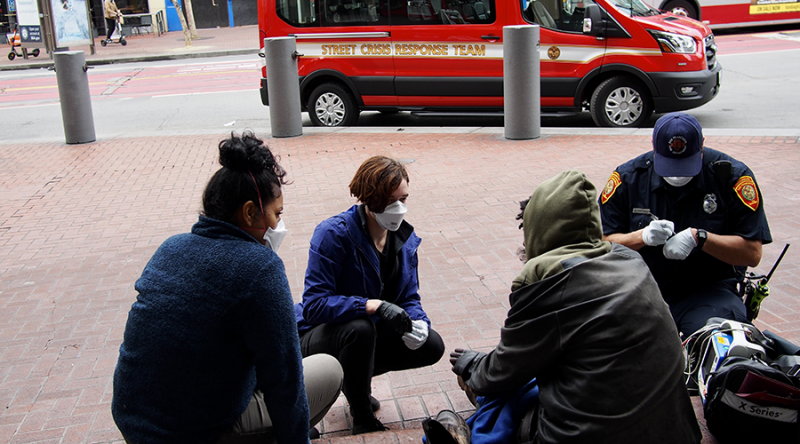“He’d ripped out cabinets in his house. He’d smashed the stove into pieces with a sledgehammer,” Kimball said during a recent webinar on the 988 rollout. “He was telling me that soap was poison and that he was being surveilled. He accused me of conspiring with the government against him.”
With help from a friend, Kimball got through to a local mental health crisis line in Portland, Oregon, where Alex lives. A mobile team came to his house, calmed him down and convinced him to go to the hospital.
“An incredibly kind and wise clinician spoke gently and respectfully to Alex,” Kimball says. “They didn’t talk in terms that were clinical, like paranoia, delusions or rapid cycling, bipolar. Instead, the lead clinician said, ‘Alex, I’m hearing that you haven’t slept for days and that things are getting kind of intense. Am I getting that right?’”
While this is an ideal scenario for how the new crisis line could eventually work, it won’t be the reality in many counties in California for at least a few years. Some cities and counties, including a handful in the Bay Area, have already started to build mobile crisis response teams, but those vary widely in terms of capacity, hours of availability and the types of calls they respond to. Other areas of the state, though, have little or nothing in place, due in part to delays in federal funding. And that means that many callers who need immediate in-person help likely will be routed back to 911.
But such 911 intervention will be still be rare, says Michelle Doty Cabrera, executive director of the County Behavioral Health Directors Association of California.
“When a person calls 911, they are expecting help to come to them,” she says. “If a person’s calling a national suicide prevention hotline for emotional support, they may not want anyone to know who they are, let alone where they’re at in that moment.”
For now, Cabrera adds, volunteers and staff at the call centers won’t be able to figure out where callers are located, even if they want to, because the system is organized by area code, not geographic location.
“So let’s say you moved to California from Washington, D.C., and you decided to keep your D.C. cellphone number,” Cabrera says. “You would be routed to the Washington, D.C., 988 call center, not to the one where you live, here in California. D.C. is not going to know anything about what local resources exist for you here and vice versa.”

